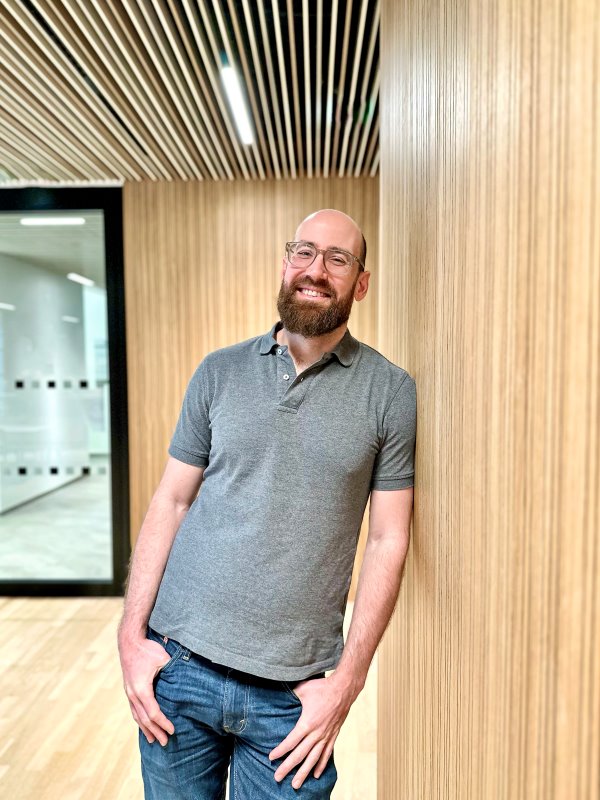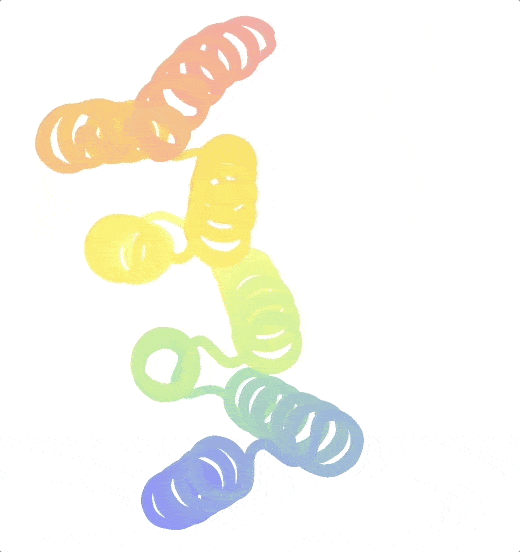March 27, 2024
The Protein Factory
New assistant professor at ISTA assembles 3D nano-molecules
The Institute of Science and Technology Austria (ISTA) welcomes Florian Praetorius to its faculty. With the assistant professor joining the Institute, the campus gains an expert in designing proteins from scratch, as well as bridging the realms of biochemistry, molecular biology, physics, and computer science. The proteins hold the potential for advancing vaccine development, among others.

Florian Praetorius walks down a bright hallway in the Moonstone Building, the newest building on the campus of the Institute of Science and Technology Austria (ISTA). He takes a glimpse into his lab, which is currently being tailored to his needs. “Soon, it’ll be filled with lab benches, equipment, and most importantly, a highly motivated and dynamic team of scientists,” he says. In this lab, biochemists, molecular biologists, physicists, and computer scientists will bundle their expertise into a “protein factory” harnessing their collective expertise to engineer biomolecules.
The protein assembly line
“We build proteins from scratch with properties that can’t be found in natural ones,” Praetorius explains. Like real-world design processes, creating those molecules demands creativity, precision, and knowledge of fundamental scientific principles from different fields.
Initially, the researchers have to generate and predict the structure of the protein. For this, they use computational and deep learning tools. Subsequently, in the experimental part, bacteria are utilized as a powerhouse, akin to automated machinery in a factory. By modifying bacteria, these microorganisms can synthesize the desired protein as part of their regular cellular processes. The researchers then employ basic biochemistry tools to isolate, purify, and characterize the proteins, ensuring quality control.
The Praetorius group is specifically interested in building proteins that can transition between different shapes. These changes can be linked to different inputs and outputs. “The input can be any stimulus, such as light, while the output may manifest as a change in function,” the biochemist elaborates. Natural proteins often adopt such state changes to carry out their biological function. However, engineering them is very difficult. In 2023, Praetorius and colleagues achieved a milestone by designing a set of proteins capable of toggling reversibly between two conditions. Their creations, known as “hinge” proteins, occupy one state in the absence of a binding partner and a second one upon tethering to a partner molecule.

Origami in science
Besides crafting proteins, Praetorius’ group is also into origami—DNA origami, to be precise. Similar to the subtle and delicate art of folding paper into various shapes, scientists take DNA strands and bend them into precise, nanoscale, three-dimensional structures. The Praetorius lab develops hybrids by integrating DNA with their crafted proteins to manufacture larger complexes. “A typical protein is only a few nanometers in size. To construct something that spans 100 nanometers, you’d have to assemble many proteins, which can be very tedious,” Praetorius explains. “Our DNA structures can bridge those length scales, without altering the protein’s properties. The ultimate goal is to merge approaches from computational protein design and DNA nanotechnology to generate DNA-protein hybrid assemblies that combine the best of both worlds.”
Advancing technology and collaboration
Newly designed assemblies like these hold promise for advancement across various fields. For instance, they present an appealing potential as antibodies or enzymes in therapeutic contexts and may serve in vaccine development. When a virus tries to infect cells in the human body, it recognizes certain patterns on the surface of the cell. Proteins can specifically be designed to bind to those patterns, thereby blocking virus attachment. “That’s a long shot,” says Praetorius. “But I fundamentally believe that expanding the scope of technology will lead to novel uses and benefits.” Moreover, these nano-molecules are also valuable assets for fellow researchers and their inquiries at ISTA and beyond. “There are many potential users for our innovations, and I’m eager to foster collaborations. It would be great if we could develop a tool that might help someone answer a specific question,” Praetorius says.
From Germany to the USA to ISTA
Praetorius grew up in Freiburg, Germany, and earned his PhD in physics at the Technical University in Munich. He then spent six years as a postdoctoral researcher in the renowned Baker Lab in Seattle at the University of Washington, USA, where he learned the craft of designing biomolecules. His decision to come to Klosterneuburg was an easy one. “I appreciate the organizational structure, the limited group size, the concept of Scientific Service Units (SSUs), which provide expertise and equipment in shared facilities, and the interdisciplinary atmosphere,” he says. “In a more traditional setting, it would be challenging for me to determine which department aligns best with my work.” With an ERC-Starting grant in his pocket, he now opens a new chapter at ISTA.



